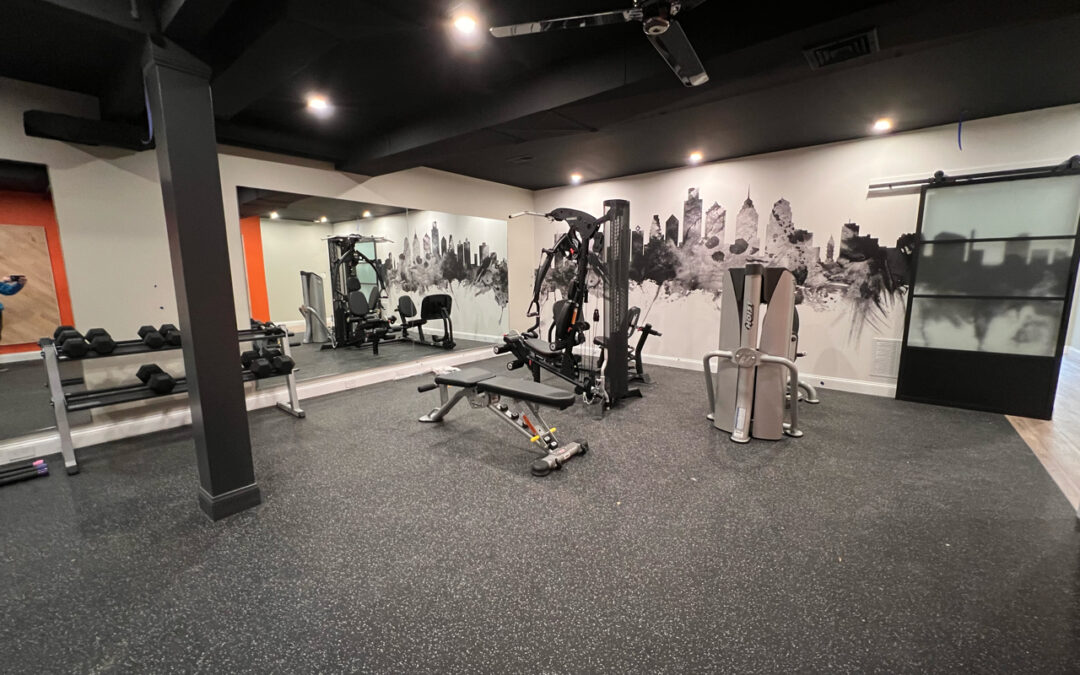Let’s face it – January’s a drag. The holidays are over, there’s probably a dead tree in your living room, and you feel like you’re ready to hibernate.
Then come all the New Year’s resolutions. “I’m going to stop drinking!” “I’m going to paint the bedroom!” “I’m going to work out!”
Nope. Pour yourself a drink and close the bedroom door. But while you’re thinking about working out, let us entice you with the idea of creating a home gym.
We just finished the most extensive home gym we’ve ever built, and it’s a place we’d love to work out in. We worked closely with the clients during the design process, tailoring the space to their needs and the fitness equipment they planned to use. Along the way, we learned a lot about what makes a great home gym.
Finding the right space
Unless you’re just throwing a yoga mat down on a bare floor, a true home gym requires some space. You need to be able to stretch and flex, and a feeling of openness helps inspire better workouts. If you use a treadmill, stationary bike, free weights, or other equipment, measuring and sketching layout ideas will help determine how much space you need.
Then we need to find or create that space in your home. Basements and attics are prime suspects because they’re usually unfinished and provide enough room to accommodate a nice gym. Two caveats: ceiling height in basements can be a limiting factor, and attic access often needs to be improved to get equipment in place.
A spare bedroom can sometimes be reconfigured into a compact home gym, especially if it’s finished properly (see below). And we’ve had a few clients convert garage space into beautiful home gyms. Finally, if there’s no way to add a gym inside your home, a custom-designed addition or separate outbuilding might be the way to go.
Outfitting a great gym
Like a kitchen or bath, home gyms work best when they’re finished with a focus on how they’ll be used and how they fit with the rest of your home. Here are a few must-haves:
Rubber flooring insulates and protects the subfloor and reduces noise transmission. A rubber floor will also cushion you if you fall or trip during a workout. And new rubber flooring textures and colors allow for almost unlimited design possibilities.
Large mirrors help keep you aligned and focused during your workout, and they visually expand the space.
Storage space allows you to keep the gym organized and uncluttered, which can also keep you from getting hurt.
A TV with a decent sound system helps avoid treadmill boredom, and it’s essential if you’re doing video workouts.
Fans help keep you cool (duh) and a clock you can see helps you time your workouts.
Finally, don’t forget decor. In the project pictured above, our clients chose a bold, wall-sized cityscape to give the room a distinct personality. They complemented it with bright orange walls and custom-made wood inserts for visual interest. The total effect is energizing – just what a home gym should be.
Ready to add a gym? We’ll do the heavy lifting – just give us a shout!


Recent Comments